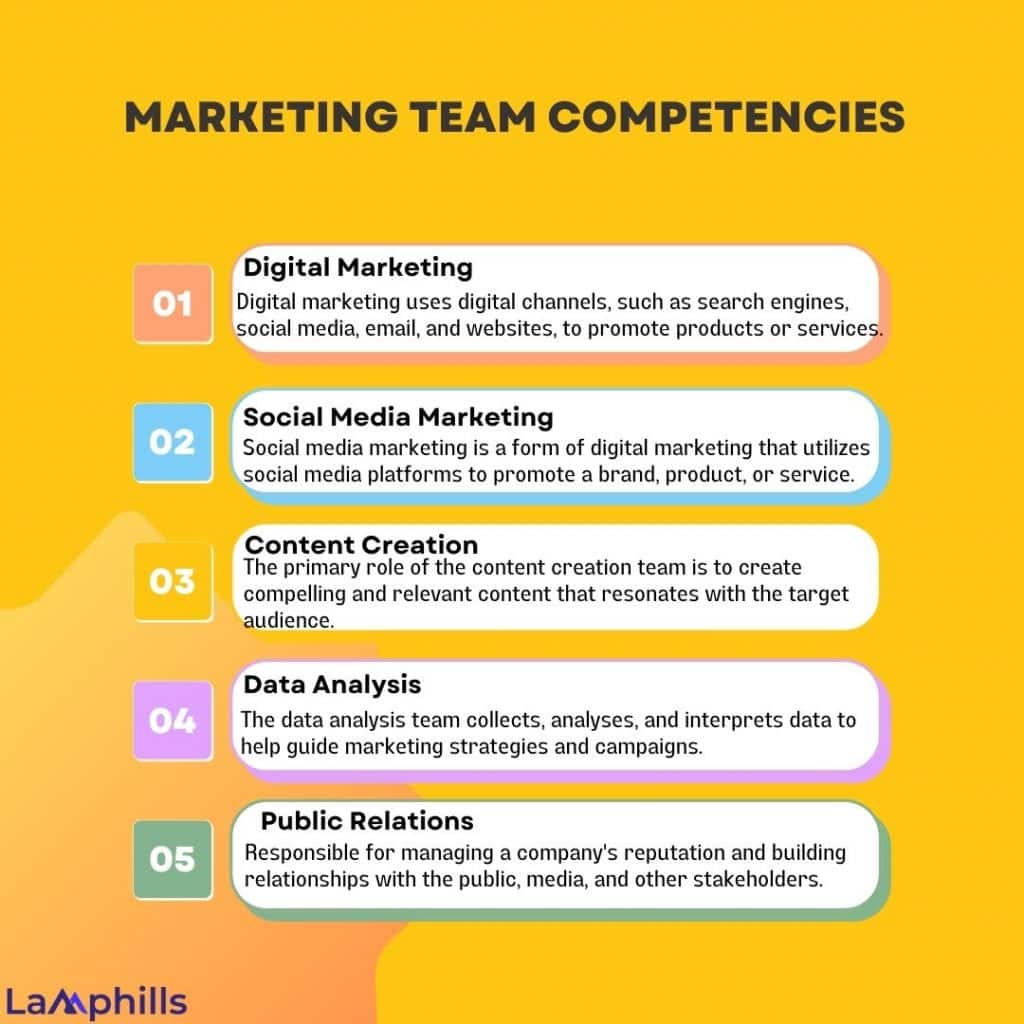Are you in search of some team-building activity ideas for your marketing department? Go no further!
If you’re a business leader, you know the importance of having a strong team dynamic and cohesive culture in your marketing department. Experiential learning activities can help create a sense of unity and better understanding among your marketing teams.
In fact, according to Forbes, despite its bad reputation, team building can be one of the most significant workplace investments you’ll make – and just 10 minutes of team building activities once a quarter will do wonders when it comes to boosting your company culture. Not convinced? This article will provide 7 team-building activity ideas for your marketing department.
Key Points
- Team building, also known as team development, is the process of turning a group of people into an effective team.
- Marketing team competencies include digital marketing, social media marketing, content creation, data analysis, and public relations.
- The 4 main types of team-building activities include personality-based team-building techniques, problem-solving-based team-building activities and initiatives, activity-based team-building techniques, and skills-based team-building techniques and programs.
- Some top reasons and benefits of team building activities for businesses are: team building builds trust, builds bridges between departments, improves communication, brings workers together, and fosters creativity and learning.
What Is Team Building In Marketing?
Team building, also known as team development, is the process of turning a group of people into an effective team. In the workplace, this initiative typically focuses on strengthening the bonds between team members so they work as a cohesive unit, communicate effectively, and accomplish common goals together.
Although it’s easy to assume that team building happens in company retreats and other group activities, team development also occurs in the organic everyday activities and interactions that bring employees closer together.
Together, these experiences enable teams to perform at a higher level than individual members can.
Marketing Team Competencies

One of the first things you need to consider when you create your marketing team structure is identifying the key channels you need to move your business forward.
Depending on your company’s budget, goals, and priorities, not all competencies must be present in your team. In some instances, some individuals can also cover several competencies within their scope.
Your consumer journey will inform the expertise you will need in your business. Here are some of the skills you need to consider.
#1. Digital Marketing
Digital marketing uses digital channels, such as search engines, social media, email, and websites, to promote products or services. It is a broad term encompassing a wide range of strategies and tactics, all aimed at reaching and engaging with a target audience in a digital space.
It enables businesses to connect with customers more personalized and targeted, leading to increased brand awareness, higher conversion rates, and greater customer loyalty. With the rise of online shopping and e-commerce, digital marketing has become an essential tool for businesses of all sizes looking to compete in today’s digital landscape.
#2. Social Media Marketing
Social media marketing is a form of digital marketing that utilizes social media platforms to promote a brand, product, or service.
It has become an integral part of people’s lives, and businesses have realized the potential of using social media to reach their target audience. Social media marketing involves creating and sharing content, such as text, images, and videos, to engage and build a relationship with the audience. It also involves running paid advertising campaigns on social media to increase brand awareness, drive traffic to the website, and generate leads.
Marketing on social media allows businesses to interact with their customers in real-time, gather feedback, and build a loyal community of followers. It is a cost-effective way to reach a large audience and is essential for businesses that want to stay relevant in today’s digital age.
#3. Content Creation
The primary role of the content creation team is to create compelling and relevant content that resonates with the target audience. The team is responsible for developing content strategies, researching and analyzing content trends, identifying key topics and themes, and producing high-quality content in various formats, such as blog posts, social media updates, videos, and infographics.
The content creation team works closely with other marketing teams, such as SEO, social media, and email marketing, to ensure the content is optimized for search engines, social media platforms, and email clients. They also collaborate with graphic designers, videographers, and other creative professionals to create visually appealing content that captures the audience’s attention.
In addition to creating content, the team also monitors and analyzes the performance of their content using analytics tools to determine what works and what doesn’t. They use this information to refine their content strategies and continuously improve the quality and effectiveness of their output.
Read also Content Team: How to Build & Grow an Effective Content Team
#4. Data Analysis
The data analysis team collects, analyses, and interprets data to help guide marketing strategies and campaigns.
By understanding customer behaviour, preferences, and trends, the data analysis team can make informed decisions about targeting and messaging. They can also track the success of marketing efforts and make adjustments as needed.
The data analysis team ensures marketing efforts are based on reliable data and insights rather than guesswork or assumptions. Their work is essential for creating effective and efficient marketing campaigns that deliver results.
#5. Public Relations
Responsible for managing a company’s reputation and building relationships with the public, media, and other stakeholders, the PR team uses tactics like media relations, event planning, influencer outreach, and crisis management to promote a company and its products or services. Their ultimate goal is to create a positive image for the company and establish trust with the public.
The PR team works closely with marketing, sales, and customer service departments to ensure consistent messaging and a cohesive brand image. They also monitor social media and news outlets to stay current on industry trends and respond to negative publicity.
What Are the 4 Main Types of Team-Building Activities?

Forming a close-knit team requires getting members to understand, trust, and respect each other. To facilitate this process, I suggest mixing up the types of team-building activities you choose to help develop your team’s chemistry.
#1. Personality-Based Team Building Techniques
Including MBTI, DISC, HBDI, and TMS. An accredited Personality Profiling facilitator conducts the Team Building, integrating and implementing a proven staff personality profiling tool. A more powerful team-building process results when the facilitator can combine the Personality with an understanding of self, communication, and active team-building initiatives in which individuals can practice. Recognize their strengths and work on their weaknesses
#2. Problem-Solving Based Team Building Activities and Initiatives
Team Building Initiatives. A unique problem is set before a team to accomplish in a set time frame. Roles are appointed, and barriers, boundaries, and rules are identified. Team-building activity ideas may encourage/force employees and staff to think laterally, implement creative solutions to various scenarios, and practice problems to solve together. An example of problem-solving-based team building by Thrill team-builders is Build a Bridge. Build a communication tower to evacuate or rescue staff. Design a Project pipeline to get a series of equipment/resources from one location to another. Many Problem-based Team Building Activities are conducted indoors to set the focus and attention on the skill or can be facilitated outdoors. Practicing problem-solving team techniques helps individuals achieve team success, effectively and more efficiently.
#3. Activity-Based Team Building Techniques
Activities for team building can include Amazing Races, Treasure, and Scavenger Hunts. Survivor, High Ropes Courses, Tree Top Adventures. Abseiling, Navigation, Mission, Project Pipelines. To the fun team building types of Mini Olympics, Games activities like Minute 2 Win it. Generally, activity-based team building involves physical exertion and may include cerebral team challenges when professionally facilitated.
#4. Skills-Based Team Building Techniques and Programs
Typically includes an element of communication, collaboration, team cohesion, project planning, and strategy. Strategically facilitating and teaching a specific series of skills that unites a team to a set outcome. Helping Hands, and Building Toys 4 Kids are excellent examples where a team building facilitator can lead or train staff and teams to new learnings. Teaching staff the importance and skills in communicating, active listening, collaborating, sharing ideas, and teamwork.
Why Are Team Building Activities So Important for Businesses?
Investing in your teams is really just another way of investing in your company’s success. To drive home our point, here are some top reasons and benefits of team-building activity ideas for businesses.
#1. Team Building Builds Trust

Trust is essential for your workplace. Compared to companies with a low level of trust, employees at high-trust companies report 74% less stress, 106% more energy, and 50% higher productivity.
And the importance of team building in establishing this level of trust cannot be denied. With team building, workers learn to support and fall back on one another when needed. The trust you build also reduces micromanagement and makes employees feel safe to engage in open communication. And we’ve already covered how important that is.
#2. It Builds Bridges Between Departments

Picture this: Your company developed a new product. But as it rolled out, you realized that the product development and sales teams were not in sync with the customer support and IT departments.
So, they did not have quick and satisfactory answers to customer questions and problems. This didn’t just impact potential revenue from the product but also increased its overall cost to the business. Building a strong business isn’t just about how team members work within their immediate teams but also about collaboration with other departments.
Cross-functional collaboration is essential to meet objectives that require people from different teams in an organization to work together. That’s where cross-functional team building comes in.
It lets employees familiarize themselves with people in different teams rather than working in a silo with direct team members. And the positive relationships formed as a result lead to a more productive business.
#3. Team Building Improves Communication

63% of leaders agree that team-building activities improve communication among employees. So that’s another reason why team building is important.
Most collaboration activities and games require team members to communicate well. Take corporate scavenger hunts, for example. What the team members find, and how fast, depends greatly on their ability to communicate efficiently.
So they talk to one another about how to assign roles, organize tasks, share progress updates, and best meet the activity’s objective. Overall, all this practice is useful when they later work on actual projects.
#4. Team Building Brings Workers Together

57% of employees say having a friend in the workplace makes their job more enjoyable. So it’s important to give your workers opportunities to socialize and make friends at work. And organizing team-building initiatives is one of the best ways to provide such opportunities.
Potluck lunches, for example, bring food and employees together in an informal environment. So, workers get a chance to communicate in a relaxed setting, which helps build rapport at work.
Team-building can help people break the ice, improve interpersonal relationships, and boost employee morale, leading to easy organizational communication and collaboration.
#5. Team Building Fosters Creativity and Learning

Creativity is more important than ever to solve some of the biggest problems facing teams and organizations. However, employees can’t develop creative solutions if you don’t give them regular opportunities to practice creative thinking.
According to a Gallup study, 35% of workers say they’re given chances to hone their creativity only a few times a year or even less. This is also why team building is important. Team building activities give workers the time and opportunity to brainstorm ideas.
For example, a company wanted to refresh its branding. But instead of outsourcing to a design agency, senior leaders crowdsourced logo and slogan ideas from their employees. Since the workers already understood their workplace brand intimately, this team-building activity led to dozens of great ideas that contributed immensely to the final brand collateral.
How to Structure Your Marketing Team
Creating a well-structured marketing team is crucial for executing effective marketing strategies and achieving business goals. Here’s a comprehensive checklist I have provided to guide you in structuring your marketing team:
How to Structure Your Marketing Team
What Are the 5 Cs of Team Building?
Team building is essential in today’s fast-paced environment to deliver success on projects. The success of any organization is largely dependent on collaboration, cooperation, and communication among team members. Effective team building enhances productivity and increases employee engagement and job satisfaction. To build a strong team, you must focus on the five C’s of teamwork: Confidence (Trust), Consensus, Commitment, Communication, and Collaboration.
#1. Confidence (Trust)
The first attribute is Confidence (Trust); however, it is called Confidence to create the 5 Cs. The rest of the attributes are based on Confidence (Trust), which is the primary base for building a team.
We often expect to have Commitment from all team members without first building Trust among the members. Then, the result is a low level of Commitment that will crumble when confronted with adversity –due to a weak foundation.
Now, how do you build Trust? I believe that trust is actually an individual and group phenomenon. Some people tend to trust others from the beginning and need more time to build trustworthy relationships. On the other hand, some environments foster the creation of trustworthy relationships, and others don’t.
A team leader plays an important role in creating an atmosphere where trust among its members can be developed. There are three key elements required to build trust:
- Leadership
- Facts
- Open Communication
An appropriate atmosphere is required to build trust among members.
A team leader plays a key role in creating this atmosphere, and he/she can do that by setting an example and properly guiding the other team members to establish trustworthy relationships.
#2. Consensus
We can agree or not, but once we reach a consensus –it is considered to be definite– and when we leave the room, the team’s decision must continue to be supported by everyone.
Perhaps this phrase exemplifies the meaning of consensus very well.
Consensus is not just the decision of the majority nor the decision of those who have more power. Consensus is built by participating in dialogue and active listening. If a team has already developed mutual trust, the pathway leading to consensus becomes much shorter.
If team members have a trustworthy relationship, dialogue, and discussion to reach a consensus is then based on their different points of view and not on individual positions; so, there are no winners or losers, but an exchange of ideas that can bring better solutions from a team’s point of view.
When trust exists, reaching a consensus is easy, as it is based on facts, not personal positions!
I believe that just like the trust, some other elements help to build a consensus:
- Active listening = understanding other people’s points of view.
- Eliminating subjectivities = specifying them if it is impossible to fully eliminate them.
- Having empathy = making use of dialogue as a means to reach better solutions.
Another important factor is understanding and complying with the team’s rules to reach a consensus. By rules, I mean the decision-making process, how information is gathered and shared, how input is received from each team member, how feedback is processed, how new options are explored, and when a decision is to be made.
#3. Commitment
Team members can participate in a team, but not consider themselves aligned with the team’s objective. They participate and do their job but are not committed! In this situation, team members are not willing to give the best of themselves to each other.
When team members are committed, they give their best and make all necessary efforts to reach the team’s objectives!
The lack of commitment can be due to many factors, but perhaps the key is the lack of alignment between individual and team objectives.
Building commitment is a difficult task because it concerns the interests and values of the team members. Team members will be committed if they feel that they belong to something. Now, what makes people feel part of something? I believe this can better be answered by another question:
What’s in there for them?
An effective way to build Commitment is by identifying each team member’s motivation.
Everyone has different things that motivate them, and those motivations change with time. That’s why a team leader must understand and continuously monitor what motivates the team members. The team leader also needs to make sure that these factors are taken care of so they will generate commitment.
#4. Communication
Communication is the most critical aspect of teamwork. It is essential to establish open communication channels to ensure everyone is clear about their and the team’s objectives. Effective communication involves active listening, expressing ideas clearly, and providing feedback. Team members should be encouraged to ask questions, seek clarification, and offer suggestions. Good communication helps to prevent misunderstandings, reduce conflicts, and improve decision-making.
#5. Collaboration
Collaboration happens only when commitment is achieved! It means that each team member is giving his/her best, and helps others reach their individual objectives.
Team members can leverage each other’s strengths and complement each other’s weaknesses to obtain extraordinary results. When each team member works effectively and at their best, we can say that we have created a High-Performance team.
7 Team Building Activity Ideas for Your Marketing Department

Marketing is a challenging field that requires a lot of creativity and innovation. They are responsible for driving growth and revenue for the company, meaning they have to be highly motivated and productive. However, this is not always the case.
To keep their team members happy and engaged, marketing managers should implement team-building activities or engagement activities where everyone can contribute ideas and participate. This will help them work better as a team, solve problems more effectively, and have fun while doing it! Here are the best 7 team-building activity ideas for your marketing department.
#1. Learn a New Skill
What better way to generate good vibes among your team than to try something new altogether? A new team-building activity, perhaps slightly outside people’s comfort zones, is one of the best ways to build trust and boost communication. For example, kayaking and canoeing are great fun and encourage your team to communicate with each other (weather permitting, of course!), whilst an activity-filled day at Go Ape with everything from zip wires to off-road Segways is a firm favorite for groups.
And if you want to encourage a little friendly competition, how about go-karting? There’s nothing like a bit of adrenaline-pumping competition to bond a group and encourage your staff to interact in a fun and new way. Just make sure everyone pays attention during the safety briefing!
#2. Room Escape Games
This is a bit new, but room escape games are becoming hugely popular worldwide – and they’re great team-building activity ideas, too! If you’re looking for fun, creative team-building activity ideas that promote leadership skills, encourage teamwork, and need logic and patience – well, this is it! It works by ‘locking’ a team of people in a room for an hour.
During that time, they have to answer clues, solve puzzles, and find hidden objects to answer questions that will help them find the key to set them free. It’s great fun but harder than it sounds – only 20% of players make it out before the hour ends. Got a big team? Why not split your employees up into different groups to encourage a bit of friendly agency competition!
#3. Scavenger Hunt
This is a great option if you want to offer a fun team-building activity outside of the office without breaking the bank. It’s a classic team-building activity that encourages teamwork and creative thinking, and it’s so easy to do: just divide everyone into groups of two or more and make a list of tasks for them to complete as a group – it’s that simple!
Your scavenger hunt can include taking a selfie with a stranger, snapping a picture of a particular building, or collecting various items, and the first team to complete all the tasks and collect all the items wins. For some problem-solving, why not set the tasks in riddles or ask them to solve clues to determine what’s next on the hunt? Finally, ensure everyone takes pictures to look at together afterward!
#4. The 5-Minute Product Pitch
Divide your co-workers into teams of three or four, and have one person from each team bring a random item from their desk, whether it’s a pen, a notebook, or a picture frame. Tell them their team is a company and this item is their product. Give each team a few minutes to “brand” their object and develop a name, logo, and tagline for the product. Ask each team to give an informal two-minute “presentation” on their product as if they were selling it, and if there’s time, have each team offer feedback to one another.
The benefit of the activity: This exercise stimulates the creativity essential to marketing by allowing teams to see old things in a new way, which is a big part of the branding process. This activity also encourages teamwork on a deadline because it involves rapid-fire brainstorming and problem-solving. The final presentation could also hone team members’ sales and presentation skills and promote open communication in your office, giving your team confidence to share “risky” ideas with one another down the road.
#5. The Egg Drop
If you don’t have the time or budget for an off-site activity, don’t worry – there are still plenty of fun and effective creative team-building ideas you won’t even need to leave your office for. For example, the egg drop. It’s simple, cheap, and one of our favorite quick tasks to boost morale, encourage problem-solving, and bond your team. Split everyone into two or more groups and give them each an uncooked egg and a pile of office supplies such as sellotape, pencils, rubber bands, newspapers, and even straws.
Each team has 30 minutes to design and build a contraption around the egg to prevent it from breaking when dropped. Once everyone is ready, drop each egg contraption from your office’s second or third floor and see which one survives. Just ensure you have an extra supply of eggs in case of any breakages during construction!
#6. Charades
This game is always a hit at parties, and it can also be a great engagement activity for your marketing team and to test people’s knowledge of products and companies.
How to Play?
- Split your team into two groups
- Have the first group act out an ad, slogan, or product name while the second group guesses what it is while timed and scored.
- Then switch and repeat the process!
- You can use this game as a brainstorming exercise for new ideas, and it also helps leaders understand how well your team works together on an ad campaign.
Takeaway
The marketing team must be prepared for the future by constantly building their skills and knowledge. This is why they need to take advantage of team-building activities to help marketers grow as professionals, improve their social skills, and better understand how they work together.
#7. Two Truths and a Lie
This quick activity is a great little icebreaker, especially for new joiners. For this exercise, get every team member to write down two truths about themselves and one lie, but ensure they don’t reveal them yet. Once every person has finished, each team member should tell everyone the three facts. The team then has to guess which one is a lie. The idea behind this activity is to get the team to share interesting facts about themselves and to encourage team bonding.
Bottom Line
In the dynamic world of marketing, teamwork plays an invaluable role. The above marketing team-building activity ideas can be transformative, invigorating your group’s dynamics and propelling performance. They serve as a vehicle for team cohesion and the development of essential skills that can significantly impact your marketing success. So, implementing these activities within your team is an investment in enhancing your business results.
Similar Articles
- How to Create a PR Team for Your Business
- Brand Awareness Ideas: Most Effective Ideas in 2024 (Practical Tips)
- Marketing vs. Advertising: Building a Growth Engine for Your Business
- 15 Best Inbound Marketing Tools That Can Save Your Business in 2024






